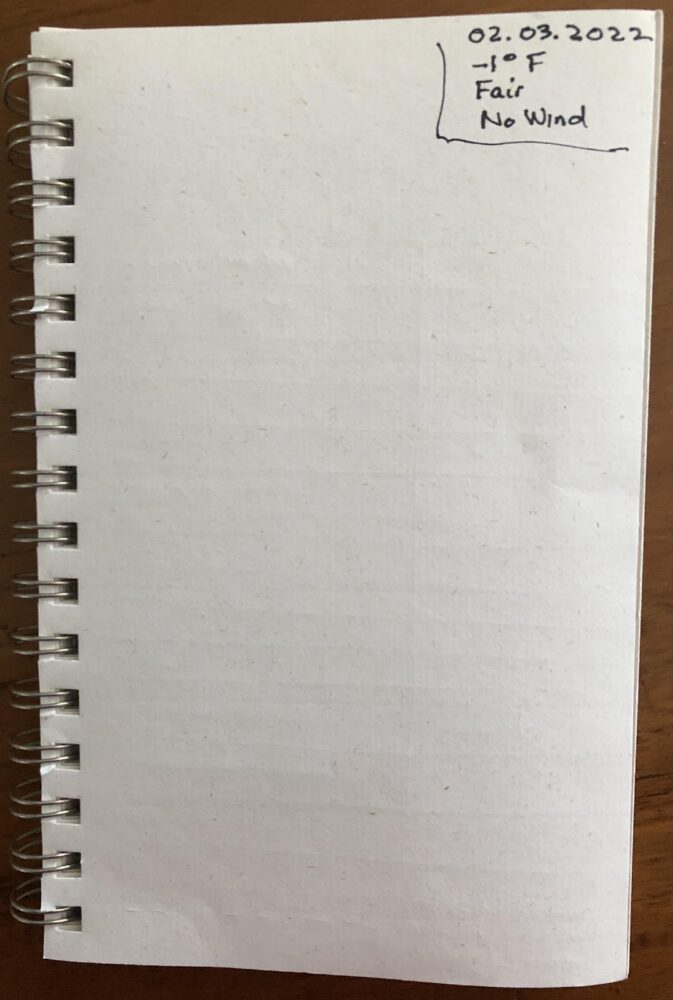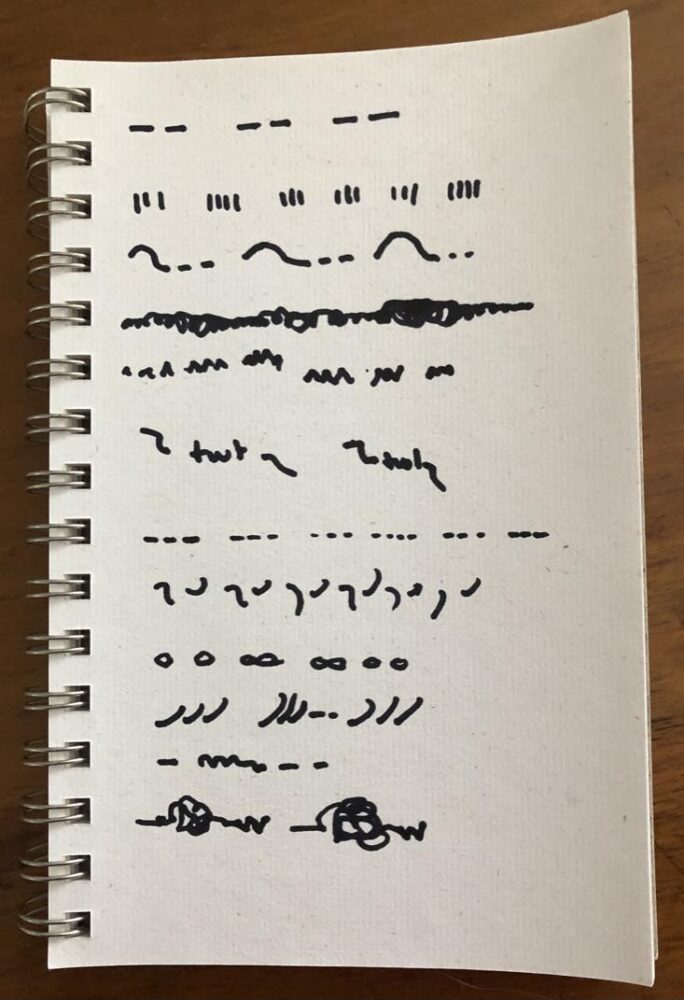

Silence.
The thermometer stands at -3 degrees F.
The world seems numb…stunned by the cold
as if all sound is frozen at its source
When I go inside, I discover my sound map is blank.
Silence.
Although I’ve taught people for years to use sound maps to enhance their listening skills, I have never been satisfied with my answer to a student’s question,
“How do I put the sounds on paper?”
While listening to Kate Rutter’s session at the 2021 Wild Wonder Nature Journaling Conference, I realized she was providing clues to some ways to explore and describe sounds in nature. It sounded like I could up my listening game, enrich my experience in the audio department, and come up with a more definitive answers to the student’s question.
I adapted her suggestions on a progression to create a possible flow of exercises. Then I kept revising them until they made sense to me. My intention was to explore the unique characteristics of the sound I was hearing. Up until I started this project, I had mainly used sound to help me identify birds…and I realized that intent was blocking my awareness of the sounds themselves.


So, I began by focusing on the sounds I heard at the perching place.
I closed my eyes, and simply listened. Cupping a hand behind my ear helped me to focus on the sound.
I sternly told myself to ignore any thoughts of identification.
After a time, I began replicating the sounds I was hearing. I tried whistling and singing, but it seems I have lost the ability to whistle and my singing scared the birds. I resorted to John Muir Law’s suggestion to draw the sound as I heard it in the air. From that exercise, it was easy to draw the random sounds I heard on paper.
I began to hear the sounds as distinct entities.
Kate pointed the way to the next step—focusing on identifying the characteristics of the sounds I was hearing. I like tables so I created one to help me evaluate the qualities of each sound by coloring in my guess about the sound I was hearing.
Now, I was able to listen for separate aspects of the sound. I discovered that the sound I heard was no longer a blob of noise… each sound had its own distinctive character. I wondered if I could create my own dictionary of sounds and learned that my sound vocabulary was limited and dull. Using several sources, I created a list of words describing sounds. After looking at my table of sounds (above), I could sift through the words and see if any of them applied to the sound I was hearing.
I began to recognize certain sounds and soon tied them to birds I could see, but it was OK if I didn’t. I even found myself analyzing the sound my sleep machine makes. I could just savor the sounds as I heard them.
Do you have to do this every time? Nope. The purpose of this exercise is to help your mind to tune into, to notice, the richness of the sounds around you. It can raise your awareness of another aspect of the world around you and enrich your perching place experience.
Did the exercise work for me? Yup.
Recently, I visited the old perching place and simply sat with my eyes closed and I heard:
- Contented chipping calls,
- A warbling musical melody,
- A string of single, deep, raspy notes,
- The twittery conversations of a flock, and
- The counterpoint of three flat notes.
What a grand symphony it was!
NOTES:
- What about high frequency hearing loss? While it can be seen as a loss of function, I have found there can be a flip side. Limiting the number of audible sounds can allow you to focus more closely on the sounds you can hear. Another suggestion by Freya McGregor of Birdability is to download the free Merlin ID app [https://merlin.allaboutbirds.org] and use it to identify the sounds you cannot hear and look at a sonogram.
- A quick summary of the process:
- Sit with your eyes closed.
- Draw the sound you hear in the air and then put it on paper.
- Analyze it using the Sound Characteristics chart
- If you like, list a vocabulary of sounds
- Listen for the sheer joy of it.
- Questions? Observations? New ideas? Contact Sue Watts through the “Let’s Journal Nature Group” listed on the PEEC website.

Sue! Amazing how you come up with these ideas and succeed.
I may not able to put the sounds on the map but will try to listen when the weather gets warmer!
I do see more activity of the birds now but windows closed can’t hear them!
Wow! Sue. Very cool process. Eager to try this approach — especially like the part that says, “listen for the sheer joy of it”. :-))